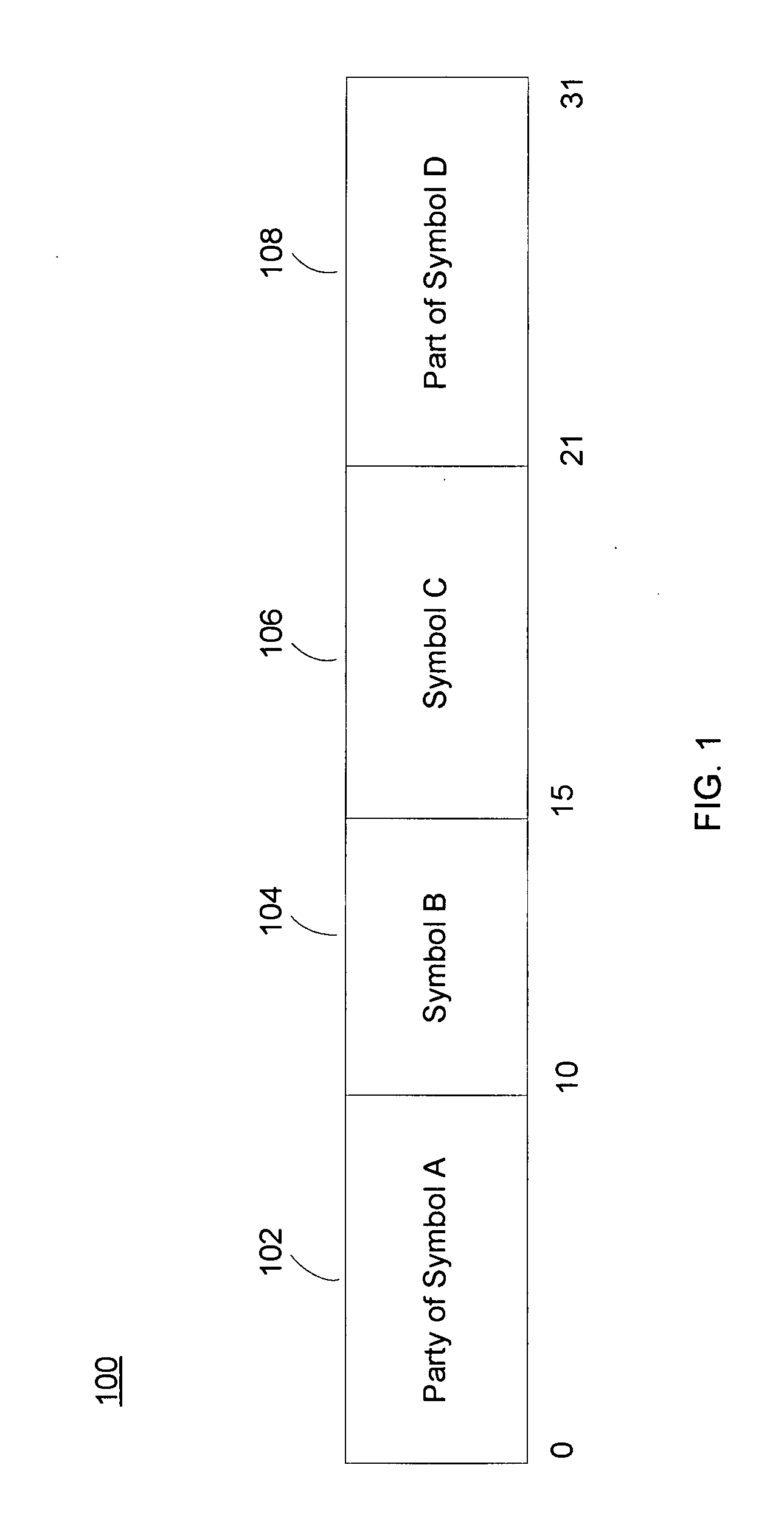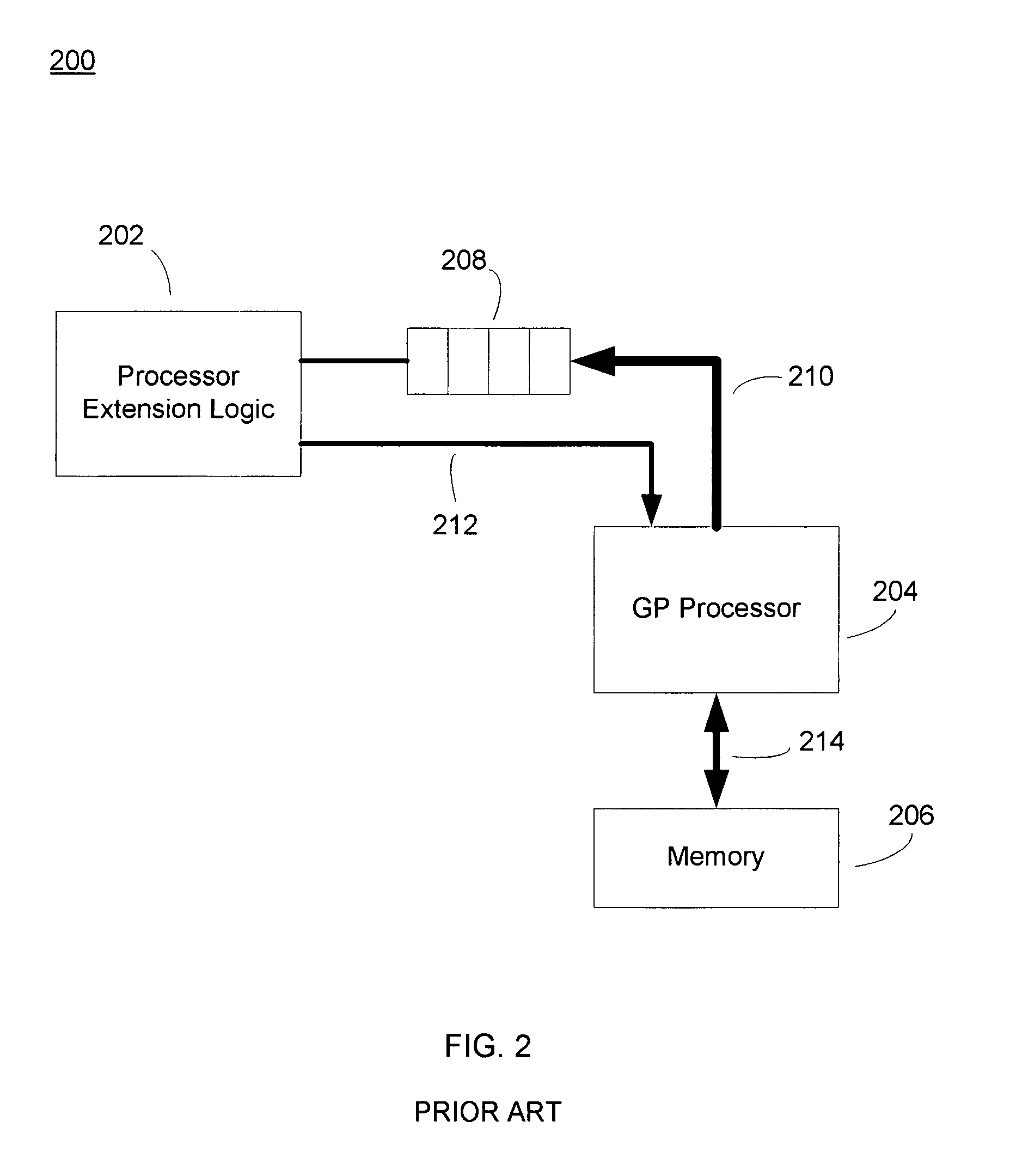Method and apparatus for improving data and computational throughput of a configurable processor extension
a processor extension and configurable technology, applied in the field of microprocessor architecture, can solve the problems of high inefficiency in performing tasks involving low-level bit manipulation of large data sets, inefficiency, and huge total processing overhead, and achieve the effect of improving data and computational throughput and increasing workflow
- Summary
- Abstract
- Description
- Claims
- Application Information
AI Technical Summary
Benefits of technology
Problems solved by technology
Method used
Image
Examples
Embodiment Construction
[0041] Reference is now made to the drawings wherein like numerals refer to like parts throughout.
[0042] As used herein, the term “computer program” or “software” is meant to include any sequence or human or machine cognizable steps which perform a function. Such program may be rendered in virtually any programming language or environment including, for example, C / C++, Fortran, COBOL, PASCAL, assembly language, markup languages (e.g., HTML, SGML, XML, VoXML), and the like, as well as object-oriented environments such as the Common Object Request Broker Architecture (CORBA), Java™ (including J2ME, Java Beans, etc.), Binary Runtime Environment (e.g., BREW), and the like.
[0043] As used herein, the terms “extension” and “extension component” generally refer without limitation to one or more logical functions and / or components which can be selectively configured and / or added to an IC design. For example, extensions may comprise an extension instruction (whether predetermined according ...
PUM
 Login to View More
Login to View More Abstract
Description
Claims
Application Information
 Login to View More
Login to View More - R&D
- Intellectual Property
- Life Sciences
- Materials
- Tech Scout
- Unparalleled Data Quality
- Higher Quality Content
- 60% Fewer Hallucinations
Browse by: Latest US Patents, China's latest patents, Technical Efficacy Thesaurus, Application Domain, Technology Topic, Popular Technical Reports.
© 2025 PatSnap. All rights reserved.Legal|Privacy policy|Modern Slavery Act Transparency Statement|Sitemap|About US| Contact US: help@patsnap.com



